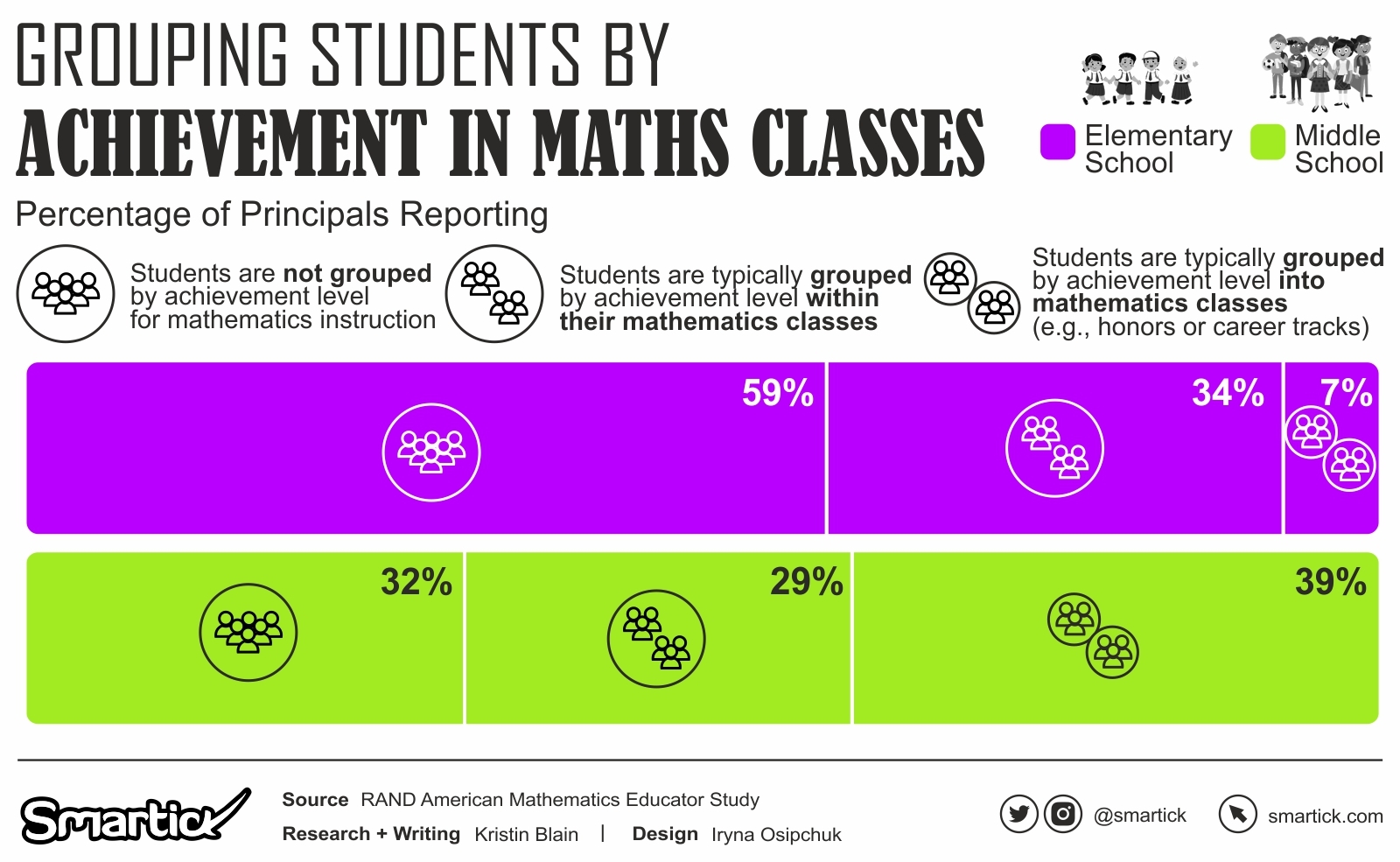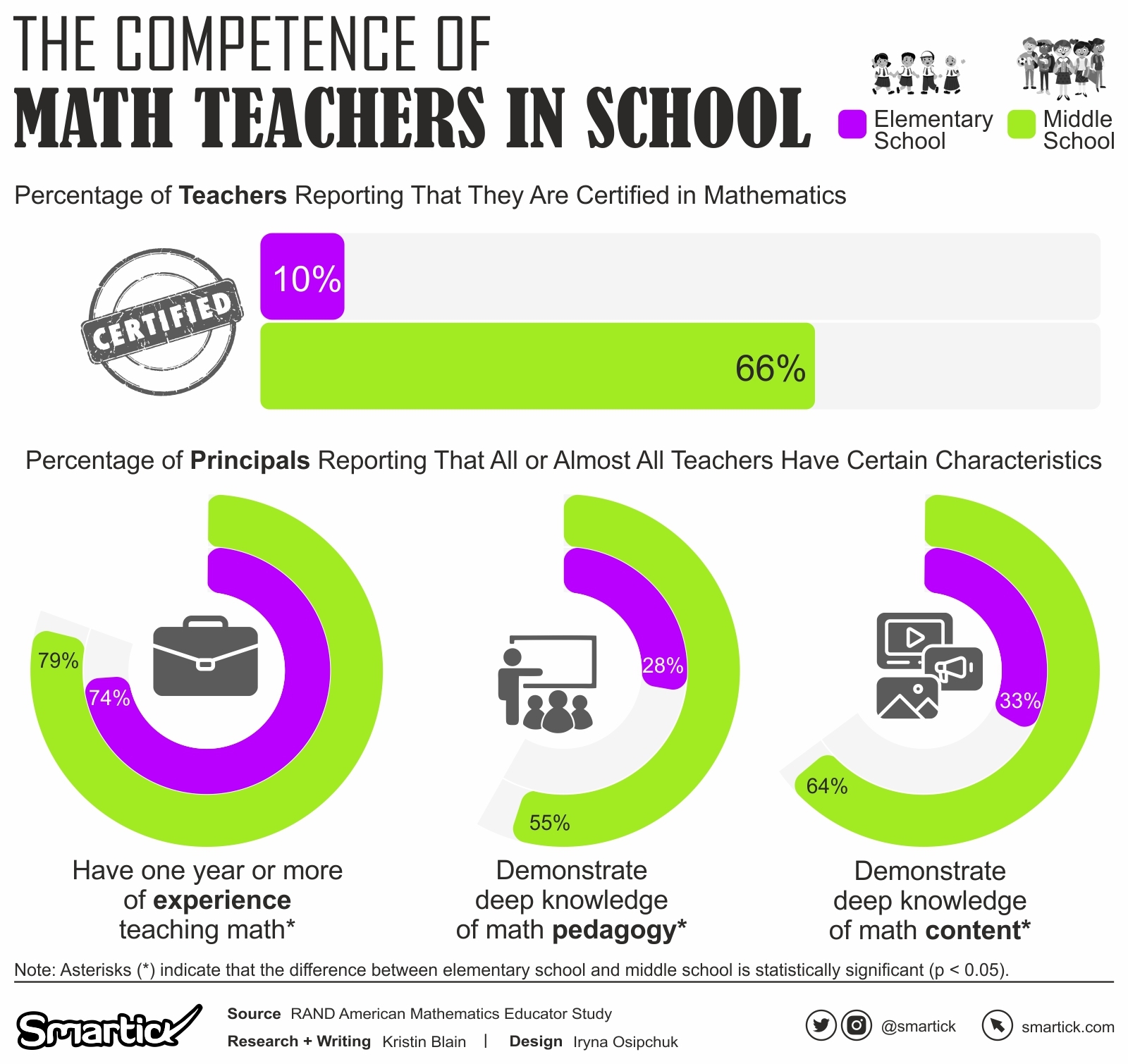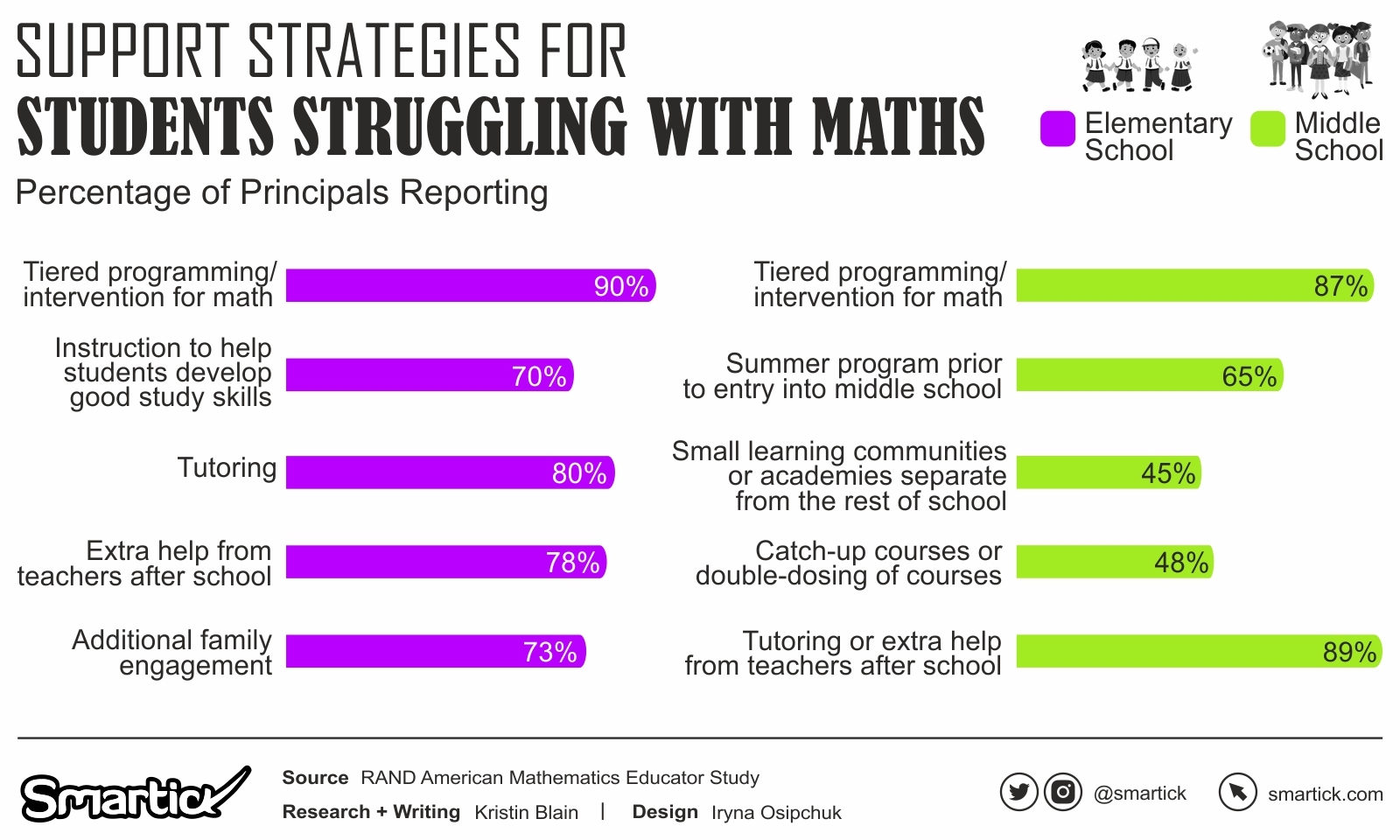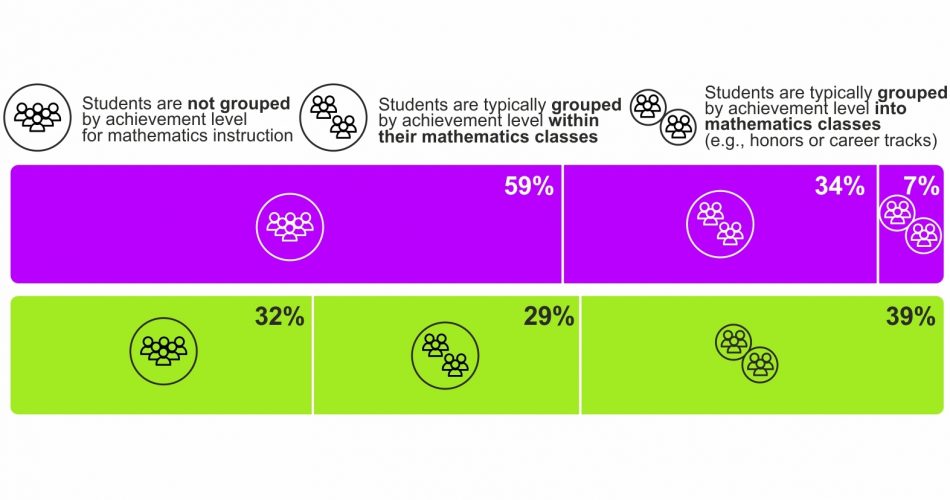
The RAND American Mathematics Educator Study (AMES) sheds light on critical factors influencing K–8 students’ access to mathematics learning opportunities, with a particular focus on Black, Hispanic, and lower-income children. In this report, we delve into three key school structures that play a pivotal role in shaping students’ math education: tracking, teacher qualifications and assignments, and supports for struggling students.

Tracking and Access to Rigorous Mathematics Courses
The RAND American Mathematics Educator Study (AMES) provides valuable insights into the complex landscape of tracking practices within elementary and middle schools, critical for shaping students’ mathematics education.
Elementary School Tracking Insights
The data reveals that in elementary schools, 41% of principals reported grouping students by achievement level. Within this group, the majority (34%) indicated that students were grouped within their mathematics classes, implying that teachers create smaller groups based on similar achievement levels during classroom instruction. A smaller percentage (7%) reported grouping students by achievement level into separate mathematics classes. In contrast, 59% of elementary school principals reported that students were not grouped by achievement level for mathematics instruction.
Middle School Tracking Insights
Contrastingly, middle schools exhibit a higher prevalence of tracking practices. Of the middle school principals surveyed, 68% reported grouping students by achievement level. Among this group, 29% indicated that students were grouped within their mathematics classes, while a significant 39% reported grouping students into different mathematics classes based on achievement levels. In contrast, 32% of middle school principals reported that students were not grouped by achievement level for mathematics instruction. This data emphasizes a more pronounced inclination towards creating separate mathematics classes to accommodate varying achievement levels in middle schools.

Teacher Qualifications and Assignment
The landscape of teacher qualifications and assignments is a critical aspect of the mathematics education system, as evidenced by the findings from the RAND American Mathematics Educator Study (AMES). The disparities in certification, experience, and knowledge among elementary and middle school teachers shed light on the nuanced challenges faced in ensuring students receive high-quality mathematics instruction.
Certification Disparities
Examining the certification status of teachers, the data indicates a significant contrast between elementary and middle schools. While only 10% of elementary school teachers reported being certified in mathematics, a substantial 66% of middle school mathematics teachers held certifications. This difference underscores a potential gap in specialized training for elementary teachers, necessitating a closer look at certification requirements and professional development opportunities tailored to elementary mathematics education.
Experience and Knowledge Levels
Beyond certification, the study delves into the experience and knowledge levels of mathematics teachers at both levels. In elementary schools, 74% of teachers reported having one year or more of experience teaching math, suggesting a relatively experienced pool. However, only 28% demonstrated deep knowledge of math pedagogy, and 33% demonstrated deep knowledge of math content. In middle schools, 79% of teachers reported having one year or more of experience, with a notably higher percentage—55%—demonstrating deep knowledge of math pedagogy and an even more substantial 64% demonstrating deep knowledge of math content.

Supports for Struggling Students: Boosting Math Success
Let’s look at how schools support students who find math a bit tough. The RAND American Mathematics Educator Study (AMES) gives us insights into the ways schools in grades K–8 help these students. This part looks at the different support systems and checks how many students actually use them. It’s like a guide for teachers and leaders to make sure everyone gets a fair chance to learn math.
Support for Struggling Students in Elementary Schools
In elementary schools, 90% offer something called tiered intervention programming. It’s like different levels of help for students who need it. They also have things like tutoring, extra help after school, and summer programs. But here’s the tricky part – even though these things are available, not many struggling students seem to use them a lot. The study breaks down what types of help are there and how many students are taking part.
What’s Happening in Middle Schools?
In middle schools, 87% say they have tiered intervention programming for struggling students. They also offer other ways of helping, like tutoring and summer programs. Now, we need to figure out how well these things work and if students are benefiting from them. The study also tells us that different states have different ways of doing things, showing us that there’s no one-size-fits-all solution.
This part of the study shows us what schools are doing to help students who find math challenging. But it also raises questions about how effective these supports are and why some students might not be using them. It’s like a map for schools to make sure every student gets the right help to succeed in math.
Understanding the dynamics of tracking, teacher qualifications, and support systems for struggling students is crucial in enhancing mathematics learning opportunities. Addressing disparities at each level can pave the way for a more equitable and effective math education system, ensuring that all students, regardless of background, have access to rigorous and supportive learning environments.

